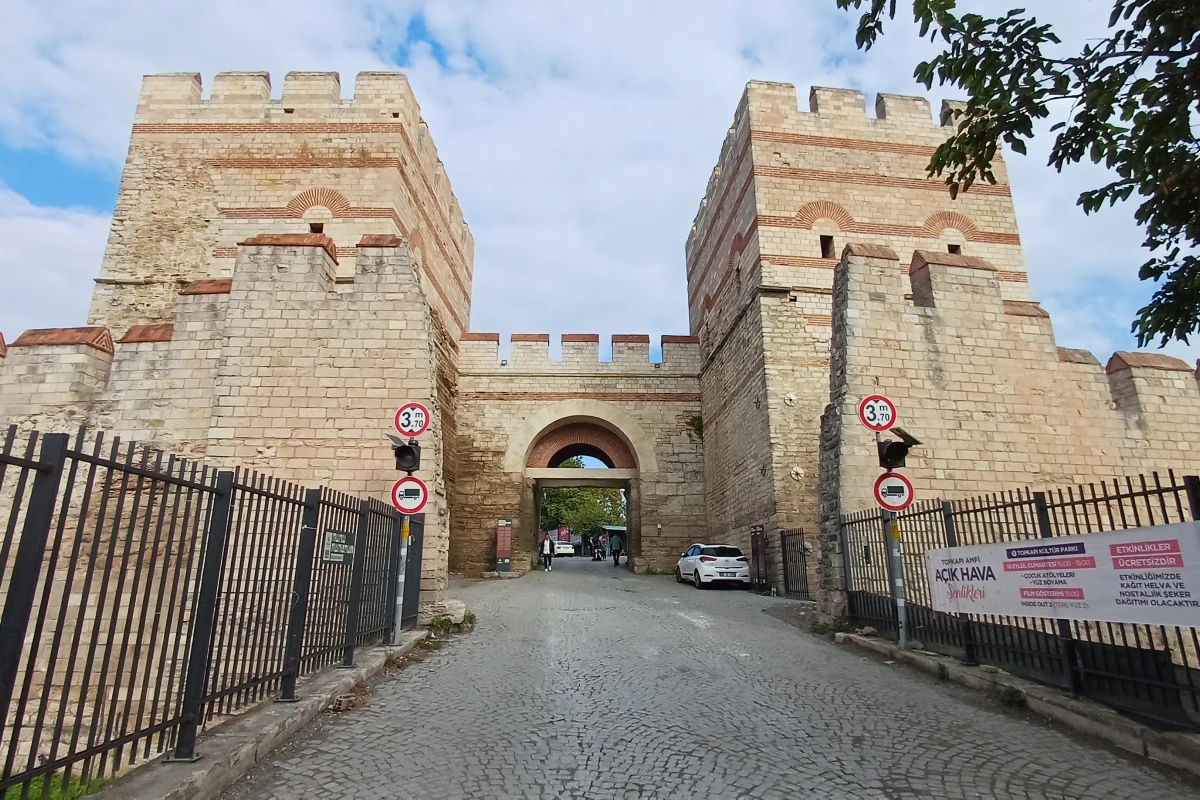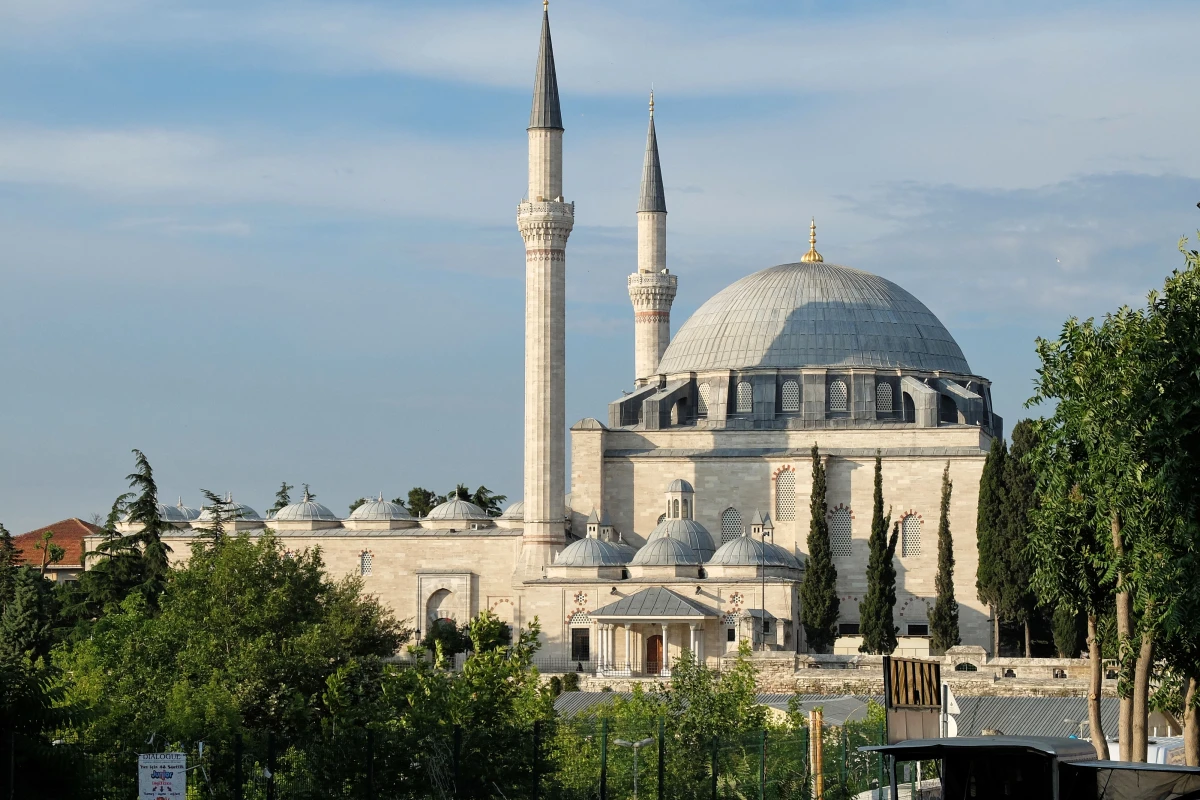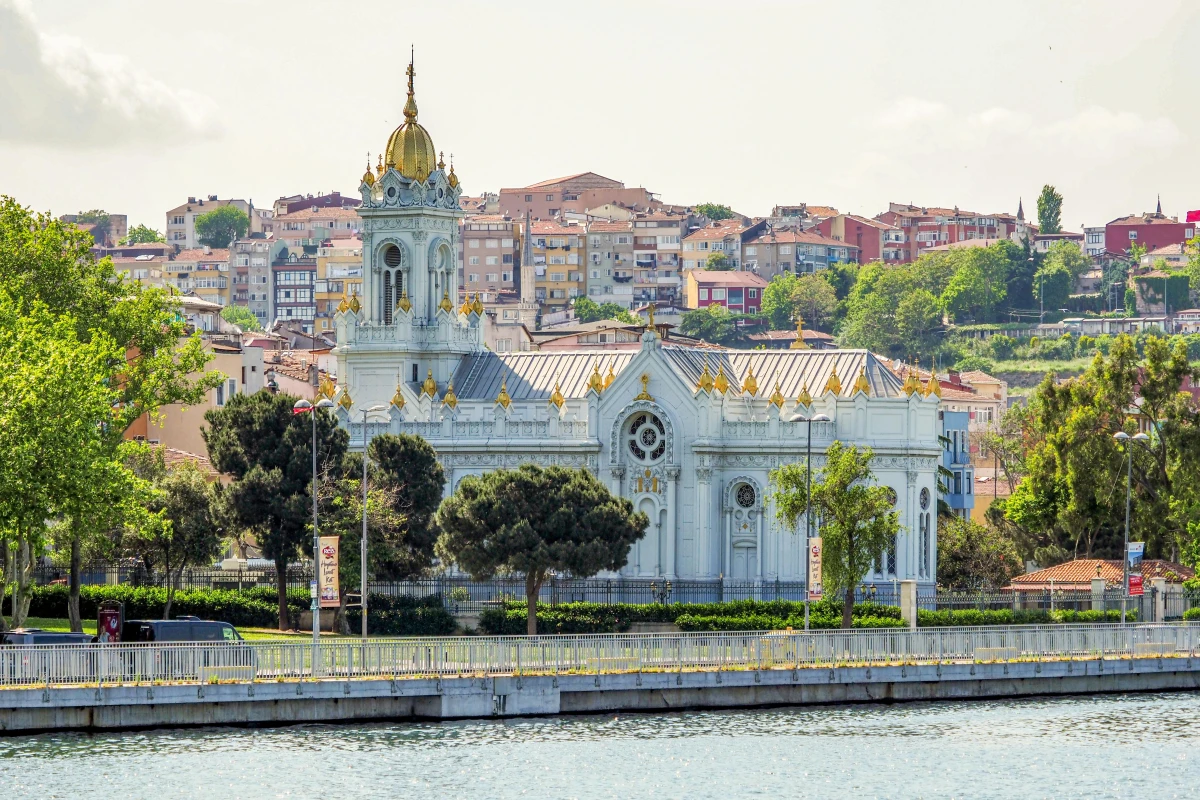Basilica Cistern in Istanbul
A quiet, mysterious world beneath the streets of Istanbul.
Step Into the Underground Palace
Right across from the monumental Hagia Sophia, there’s a modest entrance on Alemdar Street that most visitors walk past without a second thought. But descend the 52 stone steps through this unassuming doorway, and you’ll find yourself in an atmospheric underworld unlike any other in Istanbul. Welcome to the Basilica Cistern—or, as it is known in Turkish, Yerebatan Sarnıcı, meaning “Sunken Cistern.”
This remarkable underground reservoir was built in the 6th century CE during the reign of Byzantine Emperor Justinian I, one of the most powerful rulers in Roman history. Designed to store and supply water to the Great Palace of Constantinople and other important buildings in the region, the cistern could hold up to 80,000 cubic meters of water—enough to serve a large portion of the city for weeks.
Today, the Basilica Cistern no longer serves as a water source. Instead, it has become one of the city's most surreal and hauntingly beautiful tourist attractions—a hidden gem that invites travelers into the shadowy depths of Istanbul’s ancient past.
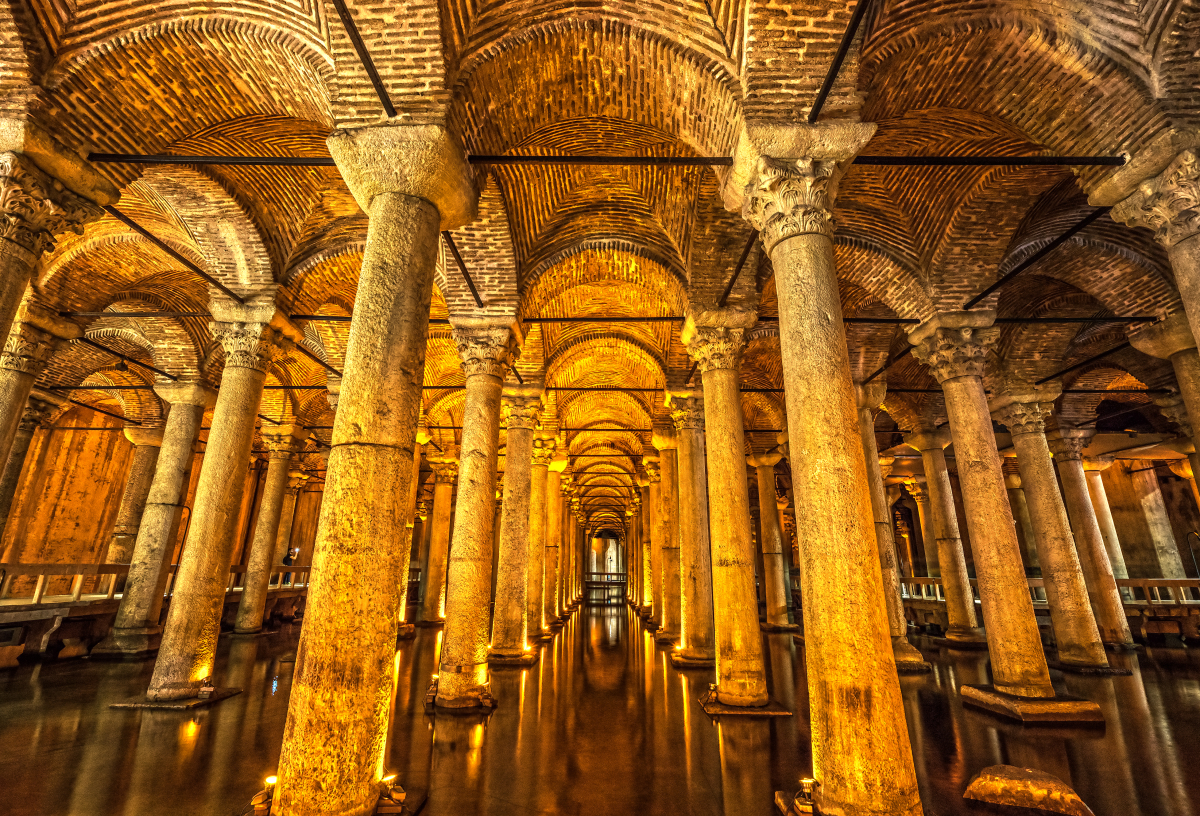
What to Look For in the Basilica Cistern
336 Stone Columns
One of the most breathtaking features of the cistern is its forest of columns—336 in total, each about 9 meters (30 feet) tall. As you stroll along wooden walkways suspended above shallow water, these columns rise like sentinels in the dim light, casting long reflections in the still pools below. Many of them were recycled from older Roman temples, a practice known as spolia, which adds to their diversity in style and detail.
Look closely and you’ll notice Corinthian and Doric capitals, fluted shafts, and even some traces of Latin inscriptions. This reuse of ancient materials reflects both the artistic tastes and the practical sensibilities of the Byzantine builders.
The Medusa Heads
At the far end of the cistern lie two of its most iconic and mysterious elements—the Medusa heads. These large stone heads, placed under the bases of two columns, are carved with the face of Medusa, the mythical Gorgon whose gaze could turn people to stone. One head is positioned sideways, and the other upside down—a design choice that has puzzled historians for centuries.
Some theories suggest that this orientation was deliberate, meant to neutralize Medusa’s curse, while others believe it was a simple architectural convenience. Either way, these enigmatic sculptures have become the most photographed part of the cistern—and a source of endless fascination.

The Weeping Column
Among the hundreds of columns, one stands out for its emotional resonance—the Weeping Column, also known as the Column of Tears. Constantly damp and decorated with carvings that resemble teardrops, this column is believed to honor the hundreds of laborers who toiled—some even dying—during the construction of the cistern. It’s a quiet and powerful tribute to the human cost behind this engineering marvel.
Cultural Insight: Why a Cistern?
Many first-time visitors are surprised to find such an elaborate structure devoted solely to water storage. But in a city like ancient Constantinople, under frequent siege and prone to drought, having a secure and vast water supply beneath the ground was not just practical—it was vital for survival.
Byzantine engineers created a sophisticated system of aqueducts and cisterns throughout the city, with the Basilica Cistern being the largest and most ornate. The roof was originally supported by brick arches and waterproofed with a thick layer of water-resistant mortar, ensuring durability for centuries.
After the Ottoman conquest of Constantinople in 1453, the cistern continued to be used intermittently, but it gradually fell into disrepair. It wasn’t until the 16th century, when the famous Ottoman traveler Evliya Çelebi described it, that its grandeur was remembered. Full restoration efforts only began in the 20th century, transforming it into the moody, otherworldly tourist site you see today.
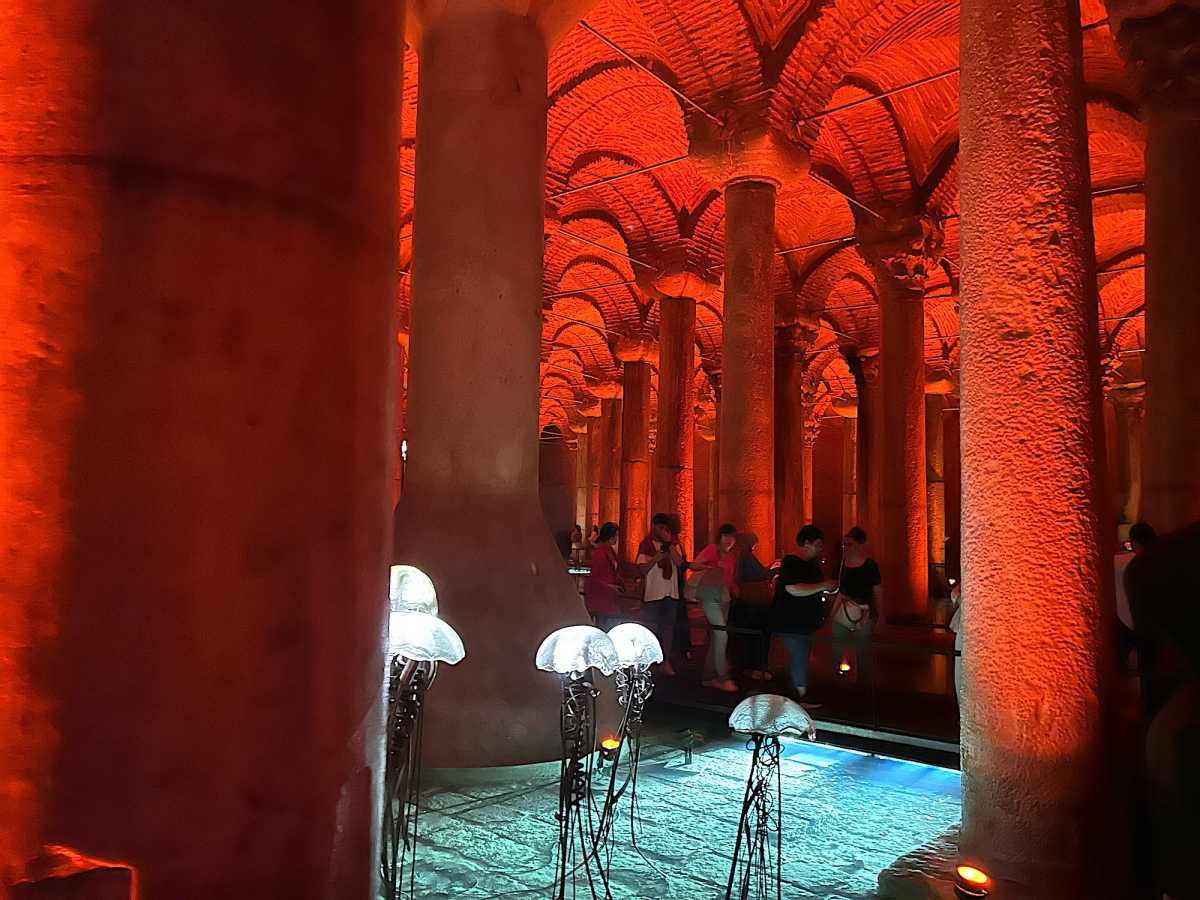
How to Visit the Basilica Cistern
📍 Location: Across from Hagia Sophia, near Sultanahmet Square
🚪 Entrance: On Alemdar Street
👟 Pro Tip: The floor is often damp and slightly slippery. Wear non-slip shoes and take your time—it’s not a place to rush.
Visitor Information for Basilica Cistern
🕒 Opening Hours:
Daily: 09:00–18:30 (day visit)
Night visits: 19:30–22:00 (features special lighting and music)
🎟️ Ticket Prices:
1300 TL (day)
2000 TL (evening) for foreign visitors (updated 2025 pricing)
📷 Photography: Allowed and encouraged! The lighting creates moody, cinematic photos—perfect for travel memories or social media.

An Experience You’ll Always Remember
Inside the Basilica Cistern, you’ll find more than just columns and water—you’ll feel a mystical silence that contrasts with the energy of modern Istanbul above. The gentle dripping of water, the echo of footsteps, and the soft ambient lighting all combine to create a truly unique atmosphere.
For many visitors, it feels like stepping into a dream or the setting of a historical epic. In fact, the cistern has been used as a filming location for movies like From Russia With Love (1963) and Inferno (2016), further cementing its place in global imagination.
Whether you’re a history lover, a photographer, a curious traveler, or someone just escaping the summer heat, the Basilica Cistern is more than a tourist stop—it’s an immersive journey into Istanbul’s hidden depths, both literally and metaphorically.



